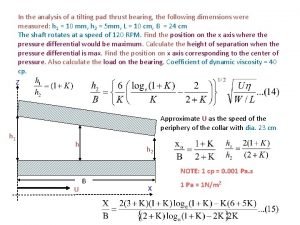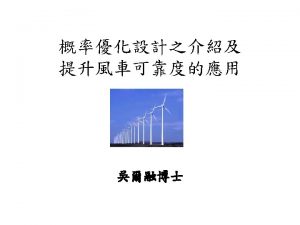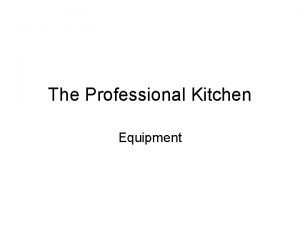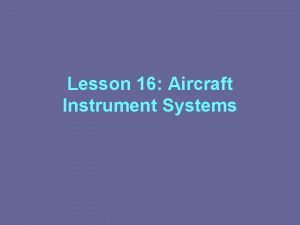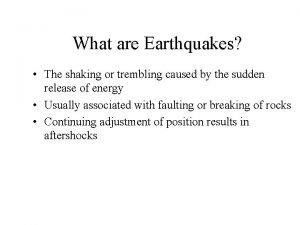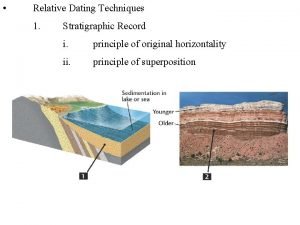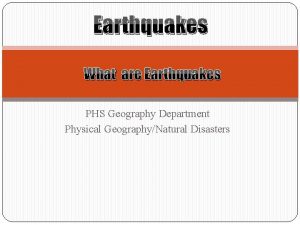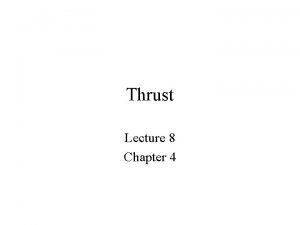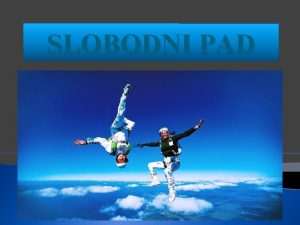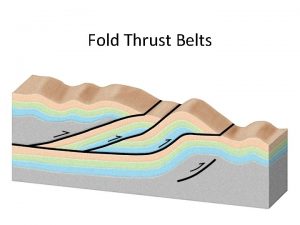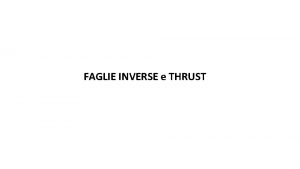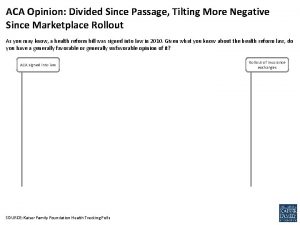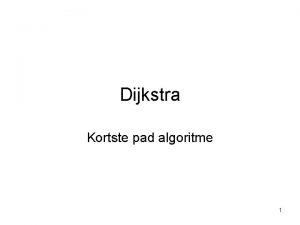In the analysis of a tilting pad thrust

















- Slides: 17

In the analysis of a tilting pad thrust bearing, the following dimensions were measured: h 1 = 10 mm, h 2 = 5 mm, L = 10 cm, B = 24 cm The shaft rotates at a speed of 120 RPM. Find the position on the x axis where the pressure differential would be maximum. Calculate the height of separation when the pressure differential is max. Find the position on x axis corresponding to the center of pressure. Also calculate the load on the bearing. Coefficient of dynamic viscosity = 40 cp. Z h 1 Approximate U as the speed of the periphery of the collar with dia. 23 cm h h 2 NOTE: 1 cp = 0. 001 Pa. s U B X 1 Pa = 1 N/m 2

1+k = h 1/h 2 = 10/5 = 2, k = 1 Xo/B= (1+k)/(2+k) = 2/3, xo = 24 x 2/3 = 16 cm ho=h 2[2(1+k)/2+k] = 5(2)(2)/3 = 20/3 = 6. 66 mm = 13. 71 cm We need to find load W from the equation

Substituting the values we get Therefore W = (0. 42 x 0. 076/0. 021)2 ~ 2. 3 N

Temperature rise in tilting pad bearing • The rate of work done on the lubricant is the frictional force F multiplied by the velocity U • It can be approximated (especially at high speeds) that all the heat is removed by the oil and no heat is removed by the pad or runner • Hence if the temperature rise is Dt, the density of oil r and its specific heat capacity is c, the energy balance, with J as the mechanical equivalent of heat, we get

Now where ho is the distance of separation when the pressure is maximum And Therefore Friction is given by

Tilting pad bearing- Temperature rise In non-dimensional form, the friction would be From the load equation, Where W* is the non-dimensional load Substituting these values into the energy balance equation we get temperature rise

Ball thrust bearings Radial load Housing collar (attaches Shaft collar to housing and is (attaches to shaft stationary) and rotates) Axial load Inner race Outer race Radial ball/roller bearing- takes on radial loads Shaft is attached to inner race while outer race is attached to machinery housing Inner race rotates with shaft while outer race remains stationary Thrust ball bearing - takes on axial loads

Tapered roller bearings (takes on radial as well as thrust/axial loads) Radial load Outer race Axial load Inner race Ref: http: //www. jtekt. co. jp/e/company/news/images/20060404_3 e. jpg

Determination of viscosity

Viscosity determination- capillary tube method • Consider steady laminar flow of an incompressible fluid of density r through a long vertical tube of radius R • The flow may be assumed to be similar to sliding of numerous cylindrical shells Force of flow Flow takes place due to pressure drop Viscous drag

Force balance on a fluid shell element Momentum in by flow Flow takes place from a region of higher pressure to a region of lower pressure The forces acting on the shell element are: • Pressure force Pressure p 1 r R Tube wall l • Gravitational force • Shear stress Momentum out by flow Pressure p 2

Forces on a cylindrical fluid element Shear force at surface at radius r = 2 prltr Momentum in by flow Shear force at outer surface of element = r -2 p(r + Dr)ltr+Dr R Pressure force at top (z = 0) = p 12 pr. Dr Pressure force at bottom (z = l) = -p 22 pr. Dr Pressure p 1 l r+Dr Gravity force on shell element = 2 pr. Drlrg Where tr and tr + Dr are the shear stresses at r and r + Dr respectively Upward forces have been indicated with a negative sign Momentum out by flow Pressure p 2

Equilibrium of the forces From the equilibrium of dynamic forces we have: Which reduces to: or p 1 – (p 2 – rgl) is the pressure difference Dp causing flow Hence,

Shear stress on element at radius r From previous slide Integrating we get where A is a constant of integration From theory on shear flow in laminar region, the shear stress is maximum at the center line (where r = 0). Therefore When r = 0, dtr/dr = 0, which gives A = 0. Therefore

Velocity in terms of radius From Newton’s law of viscosity The negative sign is incorporated because the velocity decreases with increase in radius. Hence On integrating we get: At r = R, u = 0. Therefore Velocity is zero at surface of tube and maximum at center

Max. velocity and avg. velocity Hence we get the expression for velocity in terms of radius as From the above expression it is clear that the velocity profile is parabolic and is maximum at r = 0. The average velocity is half the maximum velocity. Therefore

Expression for viscosity The volume rate of flow Q = Average velocity x Area This is known as Hagen-Poiseuille law and can be used to determine the viscosity. Therefore Where V is the volume of flow in time t
 Tilting pad thrust bearing animation
Tilting pad thrust bearing animation Frequency curve
Frequency curve Caused by the tilting of the earth’s axis
Caused by the tilting of the earth’s axis What tasks can a tilting skillet be used for
What tasks can a tilting skillet be used for Classification of aircraft instruments
Classification of aircraft instruments Controlled waste
Controlled waste Stratigraphic clause
Stratigraphic clause Focus and epicenter
Focus and epicenter Tilting
Tilting Hình ảnh bộ gõ cơ thể búng tay
Hình ảnh bộ gõ cơ thể búng tay Slidetodoc
Slidetodoc Bổ thể
Bổ thể Tỉ lệ cơ thể trẻ em
Tỉ lệ cơ thể trẻ em Voi kéo gỗ như thế nào
Voi kéo gỗ như thế nào Chụp tư thế worms-breton
Chụp tư thế worms-breton Bài hát chúa yêu trần thế alleluia
Bài hát chúa yêu trần thế alleluia Các môn thể thao bắt đầu bằng từ đua
Các môn thể thao bắt đầu bằng từ đua Thế nào là hệ số cao nhất
Thế nào là hệ số cao nhất
